The Hauntings of the Korean War: On the 70th Anniversary of the Armistice
North and South Korea have been in a state of permanent war for decades, and the psychic toll stretches across oceans and generations.
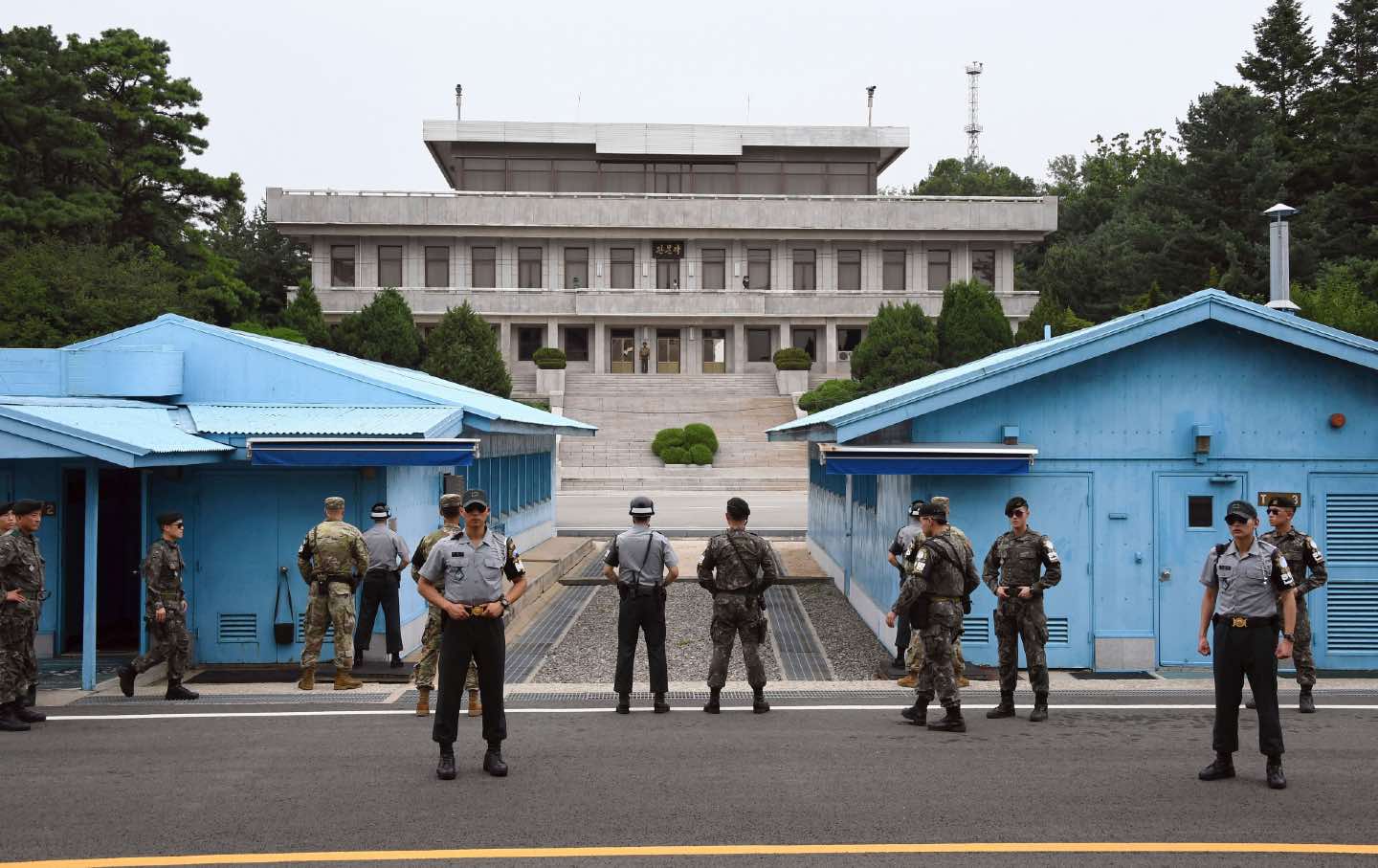
South Korean and US soldiers stand guard during a commemorative ceremony for the 64th anniversary of the signing of the Korean War Armistice Agreement in the Demilitarized Zone (DMZ) dividing the two Koreas on July 27, 2017.
(Jung Yeon-Je / AP Photo)In the fourth grade, I interviewed my mother for a family tree assignment, and I discovered she had a brother who disappeared during the Korean War. She was 9 years old the last time she saw him. As a kid, I had a hard time understanding my family history, and I would spend much of my adult life unraveling the meaning of disappearance. My uncle was the first of many ghosts to inhabit my consciousness.
The other ghosts of my childhood were the felt presences of the things unspoken in my family—the traumas that were either too painful to speak about or had been rendered unspeakable by the same geopolitical forces that divided the Korean peninsula and ripped Korean families apart on a mass scale. I don’t recall ever hearing any mention of the Korean War in my high school history classes, even though nearly every Korean person who migrated to my hometown of Chehalis, Wash., arrived there as a consequence of the Korean War. This absence of our history created its own kind of haunting.
I didn’t begin to develop a language for my fractured family history until I went to graduate school and learned about the sheer brutality of the Korean War, its origins in Japanese and US imperialisms, and the war’s status as unended. The statistics are staggering: as many as 3 million civilians killed—nearly 10 percent of the peninsula’s population; another 2 million missing or wounded; millions more displaced, homeless, orphaned, or permanently separated from family members when the border at the 38th parallel was redrawn and then closed in 1953.
The US and North Korea signed an armistice agreement on July 27, 1953, with the hope that it would lead to a peace treaty, but the signatories have been locked in a stalemate for 70 years and the Koreas have been in a state of permanent war. Organizations such as Korea Peace Now and Women Cross DMZ are still working toward a resolution, through proposed legislation such as HR 1369: the Peace on the Korean Peninsula Act, which calls for a formal end to the Korean War.
During my young adulthood, and well into my life as a scholar, I believed that my uncle had been one of the millions of civilians whose lives had been snuffed out by the war and that my mother could not speak the word “dead” in reference to her brother. The public records supported her silence. No one could locate his body, and so he became a statistic, not of the dead, but of the hundreds of thousands missing. I would later learn about other family members who had gone missing because of the war’s devastation.
When I was working on my doctoral dissertation, my research revealed a multitude of possibilities about what might have happened to my family during the war. Without family stories or official documentation, research and writing became a way of filling in the blank spaces.
At the US National Archives, I searched for photographs of the damage, and among the dozens of photos glorifying military aircraft or American soldiers’ benevolence (usually white soldiers giving toys or candy to Korean children, usually girls), I found a few that depicted the harm done to civilians. The words “For Official Use only” were stamped across the top, then later crossed out with a black marker. The most harrowing of these images was that of three napalmed women whose entire bodies had been bandaged, leaving only their eyes exposed.
Napalm, an incendiary jelly, affectionately known as “flaming death,” was the United States’ weapon of choice in 1950, and the Korean peninsula was its testing ground. It was “splashed over the landscape,” in Winston Churchill’s words, leaving the peninsula in “a smoldering ruin,” according to the historian Bruce Cumings.
According to an expert witness in the Vietnam war crimes tribunal, if one survives contact with napalm, there is the likelihood of “secondary death,” which refers to the wound’s ability to spawn new pathologies such as organ failure that appear after the original trauma. The image of the napalmed women likely captured a fleeting moment between survival and secondary death. I was looking at a picture of the living dead. I couldn’t help but wonder if my missing uncle had met a similar fate.
During American involvement in Vietnam, the public began to develop an awareness of the barbarity of napalm because of the photograph of a 9-year-old Vietnamese girl, running from the searing pain of napalm on her naked body. That girl, Kim Phuc Phan Thi, reflected upon her life in a recent New York Times op-ed:
I have carried the results of war on my body. You don’t grow out of the scars, physically or mentally. I am grateful now for the power of that photograph of me as a 9-year-old.
Nine years old. The same age as my mother when she became a refugee during the Korean War. The results of that war were also etched into her body and sometimes took the form of voices she heard. The voices told her to call out the words “September 45” each time the clock read 9:45. They were the voices that encouraged me to look for the beginning of our diasporic history in September 1945, when Japanese colonization ended and the United States occupied the southern half of Korea.
Official American and South Korean histories tell us that the war began on June 25, 1950, but the US sowed the seeds of a civil war when it divided the peninsula in 1945 and disrupted the local movements for nation-building. The American and Soviet occupations heightened tensions between groups that had fought for independence and those that had collaborated with the Japanese. Many of the collaborators then worked for the US Army Military Government in Korea (1945–48) or held positions in the Syngman Rhee administration (1948–60). Fighting broke out both across the 38th parallel and within the borders of each Korea between leftists and rightists.
Popular
“swipe left below to view more authors”Swipe →On June 25, when the North Korean Army crossed the 38th parallel, the United States saw an opportunity to prove itself a leader in anti-communism and formally entered the war. “The attack upon Korea makes it plain beyond all doubt that communism has passed beyond the use of subversion to conquer independent nations and will now use armed invasion and war,” said President Truman in a public statement. This moment marked the escalation of a civil war into a proxy war between superpowers, a project that garnered international support and “started the West on a desperately needed rearmament program,” according to journalist Herbert Matthews. As Matthews made clear in his 1951 article, “The Price of Freedom,” Korea was “a tenth-rate backwards country,” and the United States was at war there first and foremost to preserve America’s freedom and democracy but also to one day bestow these gifts on “the Asiatic masses [who] have never known what independence was and would not yet appreciate it.” What Matthews didn’t seem to understand was that “the Asiatic masses” in Korea had already been organizing for independence for decades and that American involvement in Korea had violently suppressed these efforts.
In the United States, the Korean War has been dubbed the “Forgotten War,” and through this act of historical forgetting, it has been distorted into something it never was—a “fight between good and evil,” in which communism and North Korea had a monopoly on state repression and brutality, a “good war” in which there was no moral ambiguity about US involvement in the war or the war itself, an act of delivering the Asiatic masses into freedom.
Even in contemporary liberal media, the Korean War has been called “a useful geopolitical tool,” a war that the US approached “in a sensible way.” But there is now a counternarrative emerging that suggests that we must think about the massive civilian death toll not in terms of an inevitable “price of freedom” but as the outcome of genocide. Indeed, the US-led air war wiped out a fifth of the civilian population of North Korea, and anti-communist practices to destroy “reds” often failed to distinguish between combatants and civilians. Dong Choon Kim, in an article published in the Journal of Genocide Research, demonstrates that South Korea’s widespread use of massacre to “cleanse” the nation of “the red virus” was another form of genocide.
Some of these hidden aspects of the war have come to light thanks to the work of the Truth and Reconciliation Commission of Korea (TRCK). We now know the extraordinary degree to which South Korean police and military, under the auspices of the US, engaged in an anti-communist mission that involved the mass killing of its own civilians, including children and the elderly, if they were perceived to have been susceptible to leftist influences.
I was not aware of the details of the TRCK’s findings in 2007 when I traveled to Korea and met a grandmother who had been a self-avowed “partisan,” one of the rebels based in the mountainous areas around South Korea’s Jirisan. The old woman spoke of having survived a massacre in 1954, which she claimed had been a covert operation by the US to extinguish any vestiges of left-wing insurgency operating in the south. This incident was perhaps a part of Operation Rat Killer, a joint US-ROK counterinsurgency program that targeted Jirisan. Her story stayed with me because of my own family’s proximity to Jirisan, and I wondered if she had been one of the “girls with guns” whom my mother had seen while traveling through the mountains during the war. What I did not yet know was that the anti-communist project of “rat killing” also extended to people in the villages near Jirisan, in my mother’s province of South Gyeongsang.
Over the course of a few days in February 1951, the South Korean Army killed 1,400 civilians for living in communist-influenced areas. Government officials initially tried to cover up the massacres, then later denied or minimized the extent to which civilians, and particularly children, were targeted. Not until 2010 did the truth come out that approximately half of the Geochang massacre victims were children. In the village of Cheongyeon, Kim Woon-seop was the eldest of only five surviving children. He was 9 years old.
A tinge of survivor’s guilt creeps in as I write this. If my family’s ancestral village had been closer to Jirisan, I might not be here today. The difference between survival and slaughter was 35 miles.
This reign of terror against so-called communists continued for decades—massacre survivors and families separated by the 38th parallel could not openly grieve their lost loved ones. Heonik Kwon writes in After the Korean War: An Intimate History that “a family’s act to remember…may make the family as a whole an outcast from political society.”Writers such as Hyun Ki-Young and Hwang Sok-Yong, who shed light on civilian massacres through their fictional works, faced imprisonment, torture, and exile. To be a South Korean citizen who did not actively disavow communism or who was related to a suspected communist was to risk a terrible fate at the hands of the state.
I did not begin to investigate this aspect of my family history until 2008, when I took my mother’s ashes back to Korea and the story I had once told myself about my uncle began to unravel. My mother’s sister, my imo, spoke of their brother’s disappearance and wondered whether he might still be alive in North Korea. His apparent erasure from my family for all those years might have been a consequence of their fear of guilt by association.
My imo chattered quickly in her southern dialect, a dialect I once understood and could speak somewhat when I was a little girl but forgot as I grew up in the US. By the time I visited my aunt in 2008, I had relearned enough Korean to get around, but it was “Seoul mal” or “Seoul language” as my aunt told me, not her language. Not our language. “What happened Grace-ya? You used to speak so well when you were 4.” Even though my friend was there to translate, my imo’s words rushed out too fast for me to fully process the implications, but one thing was certain. She had broken the silence about her brother, and so I began to imagine a different kind of ghost story.
My uncle had always been a shapeshifter in my imagination. By this point, my research had revealed to me a dozen different ways a body could be destroyed by war. And now, this other figure was thrown into the mix—an old man on other side of the 38th parallel, haunted by the faces of his family, having spent his whole life not knowing whether they had survived the war. One of them did die during the war, and another during its aftermath, but my living uncle could never have learned that, and so the ghost uncle still wanders along the DMZ crying out their names.
Beyond the body count of the Korean War, there is the psychic toll that stretches across oceans and generations, an agonizing silence that gets passed down by the survivors. In the absence of any certainty about what happened to the missing in my family, my research has been an effort to remember what might have happened, and to grieve the dead and disappeared. Through this process, many other spirits have joined my familial hauntings, and I write for them too. I write to make some small intervention, in hopes that we can acknowledge the truth about the Korean War and make reparations to those who still suffer its consequences.
I write for my own child, who is 9 years old, the same age as my mother when the war began to tear apart her family, the same age as Kim Woon-seop when he witnessed his country’s soldiers gun down everyone he loved.
My child is the same age as I was when I learned that war was part of my family’s legacy, and I do not want their journey toward understanding it to be as painful and arduous as it was for me. They have been slowly learning about these terrible histories so that they can understand that, as descendants and as human beings, we have a responsibility to care for our ghosts. I write so that they do not grow up, like I did, haunted by what we are not allowed to know.
More from The Nation
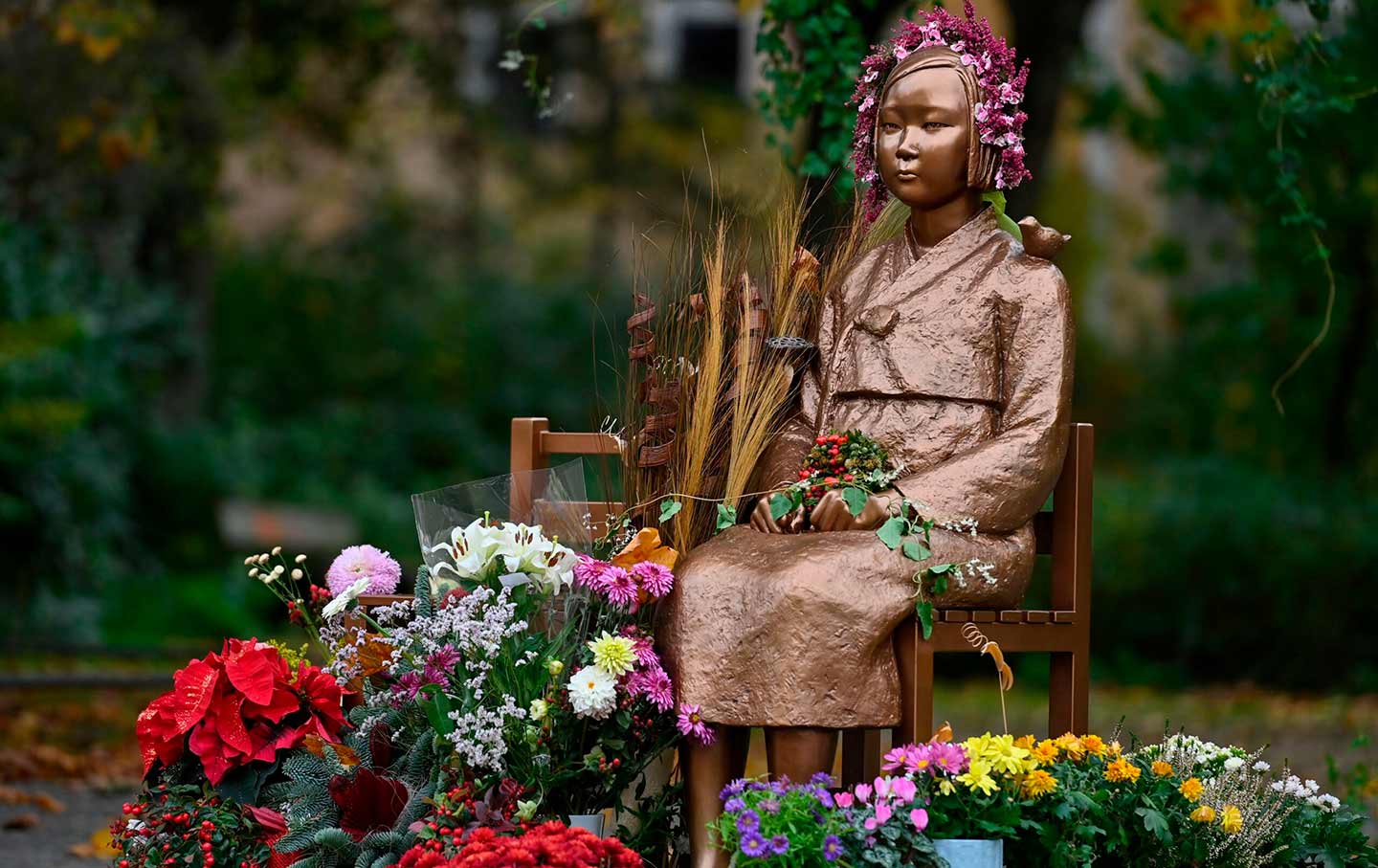
The Fight Over Berlin’s Comfort Woman Statue The Fight Over Berlin’s Comfort Woman Statue
Why the bronze figure of a girl in Germany is infuriating the Japanese government.
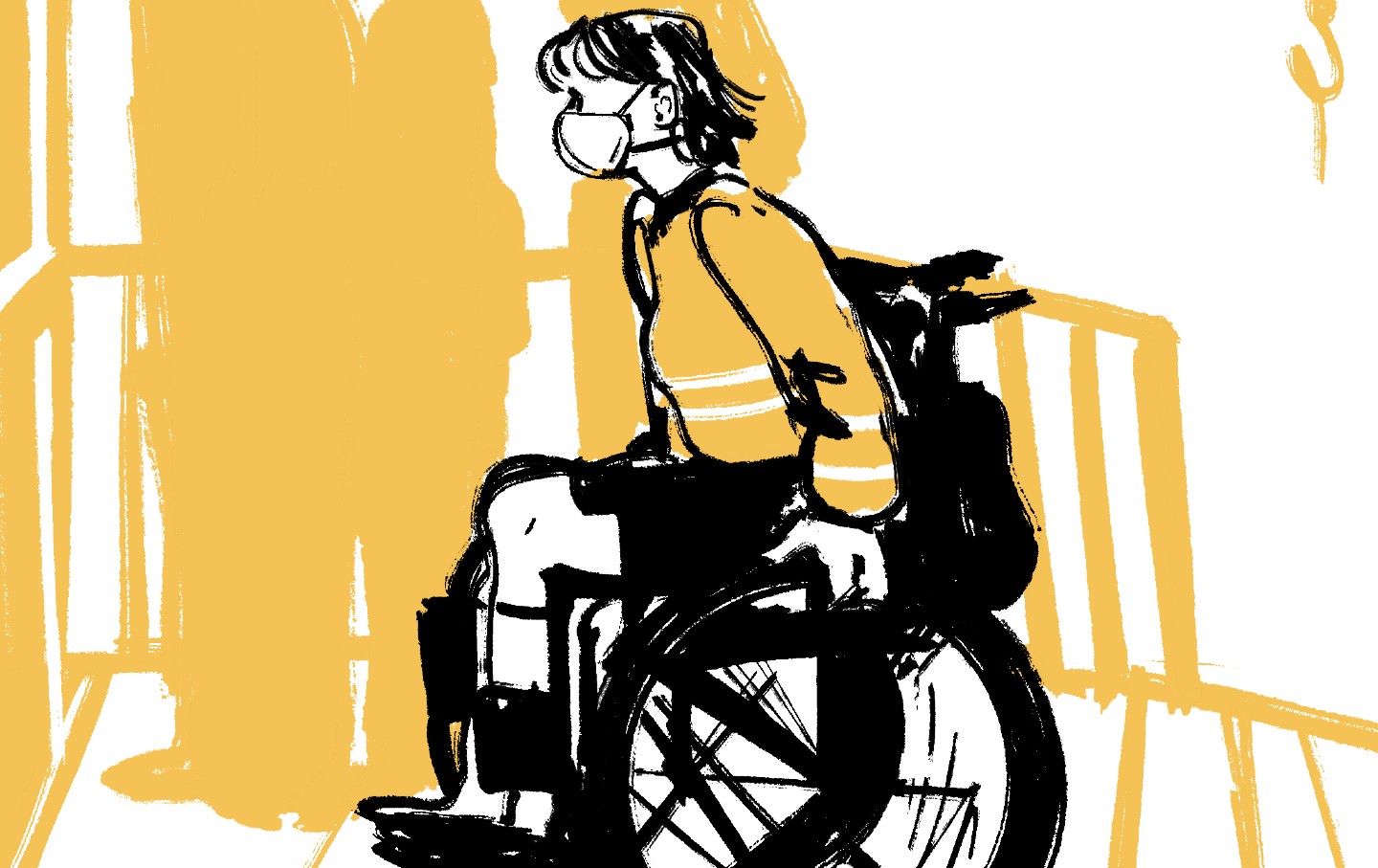
Wheelchair Users Block the Seoul Subway as the Right Takes Power Wheelchair Users Block the Seoul Subway as the Right Takes Power
The hostility of the conservative party has pushed the disability-rights movement to the center of a larger fight for minority groups in South Korea.
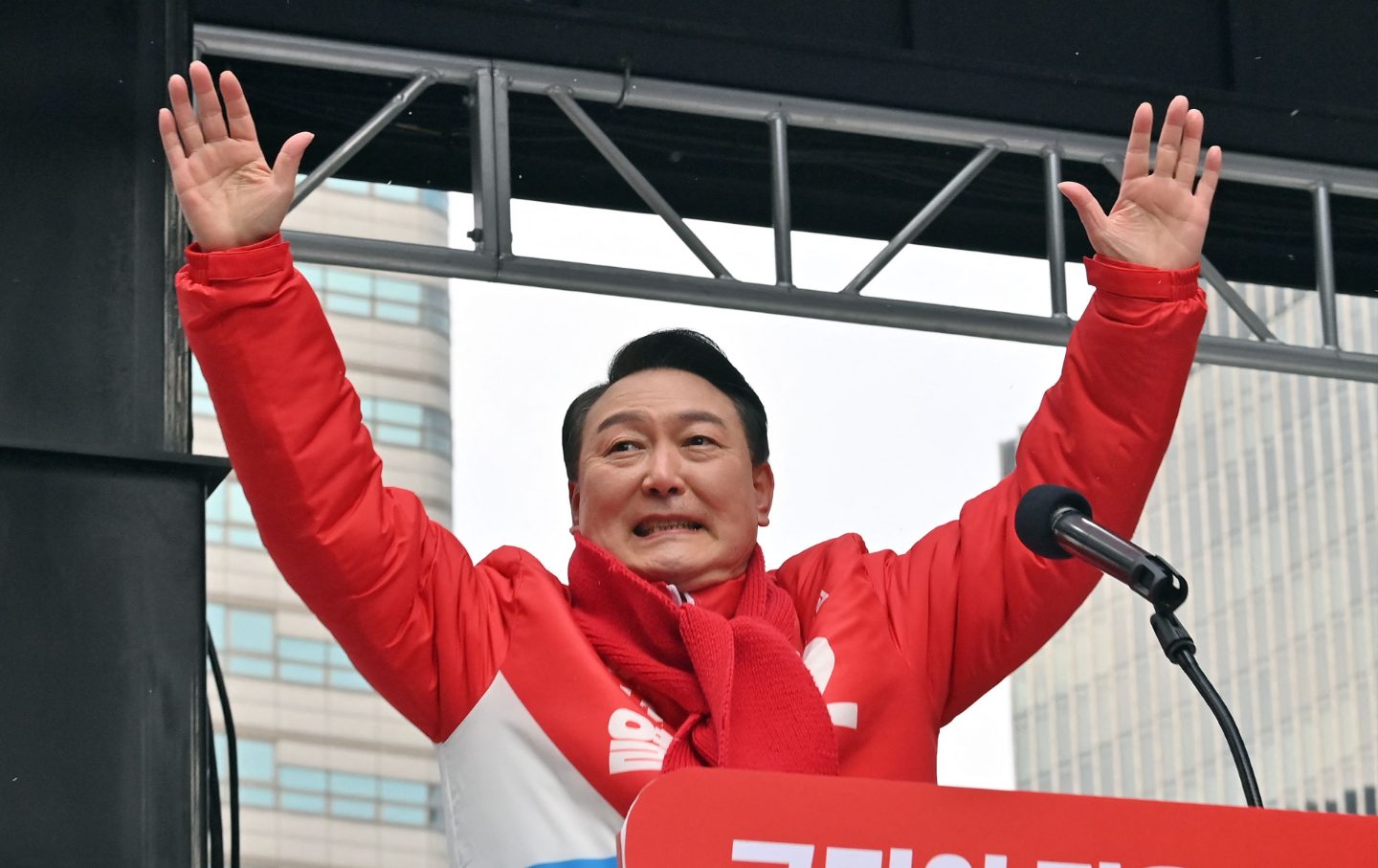
South Korean Feminists Brace for a “Long, Hard Winter” Under a Right-Wing Leader South Korean Feminists Brace for a “Long, Hard Winter” Under a Right-Wing Leader
Yoon Suk-yeol’s election win was the culmination of a sexist backlash that swept the country.

Misogynistic Hate Will Not Stop Korean Feminism Misogynistic Hate Will Not Stop Korean Feminism
Male chauvinists launched a campaign to humiliate An San, a 20-year-old archer. Instead of giving in, she won another gold.
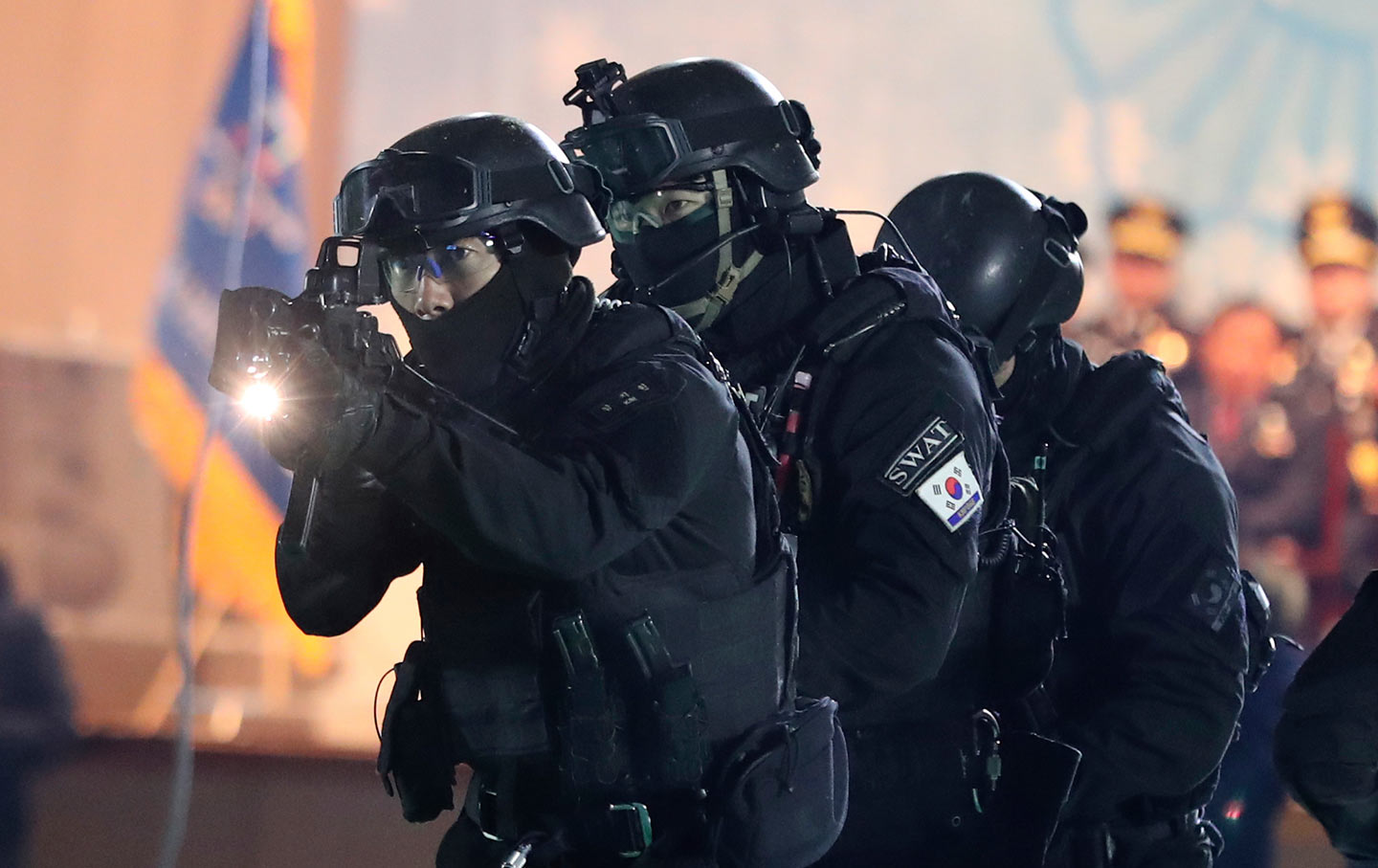
The Fight to End South Korea’s ‘Blood-Stained’ National-Security Act The Fight to End South Korea’s ‘Blood-Stained’ National-Security Act
As Seoul and Pyongyang inch toward peace, an alleged North Korean spy goes on trial.
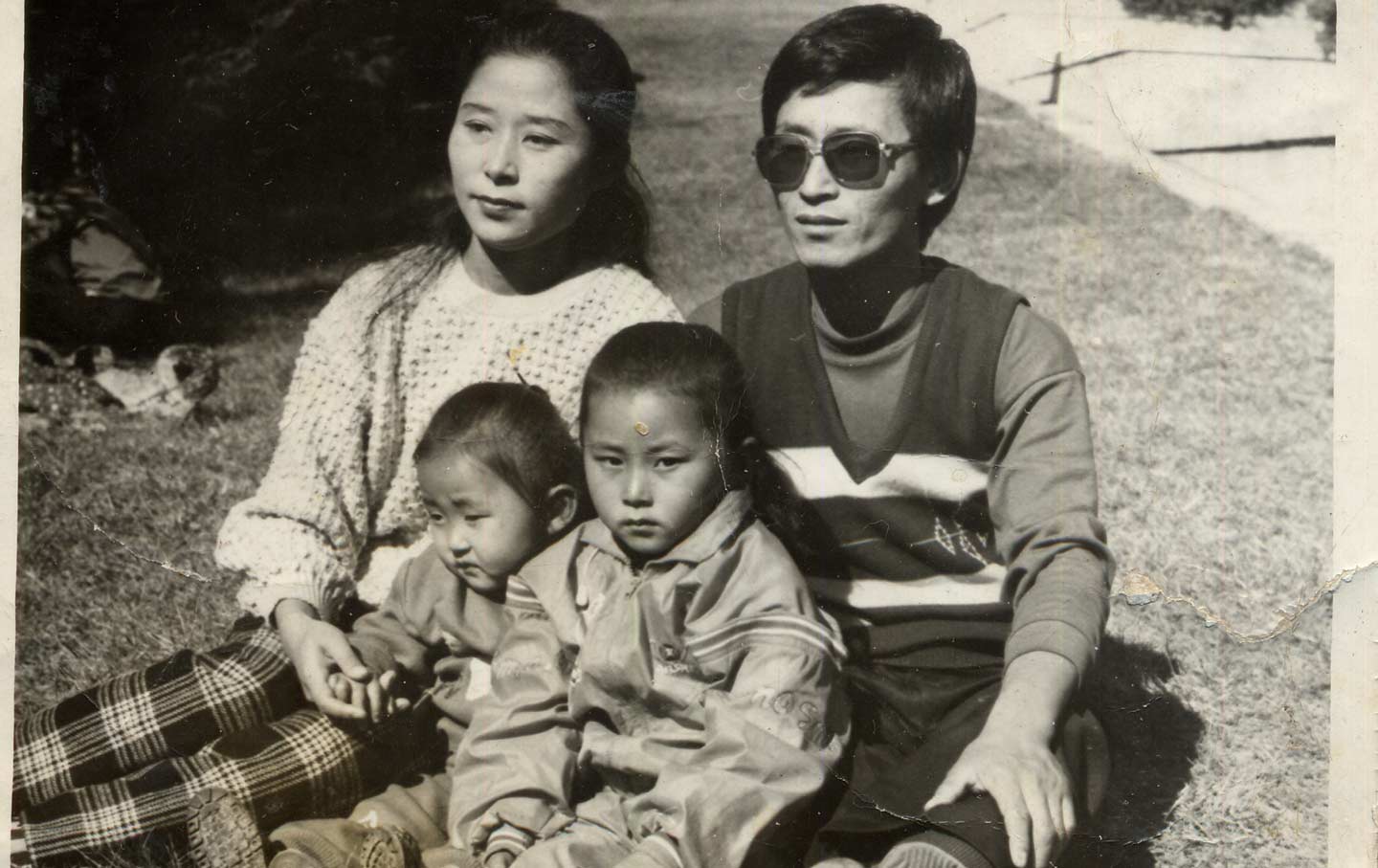
Escape From the DPRK Escape From the DPRK
How Yeonmi Park, a North Korean defector, became a controversial globe-trotting celebrity on the stage of international human rights.


